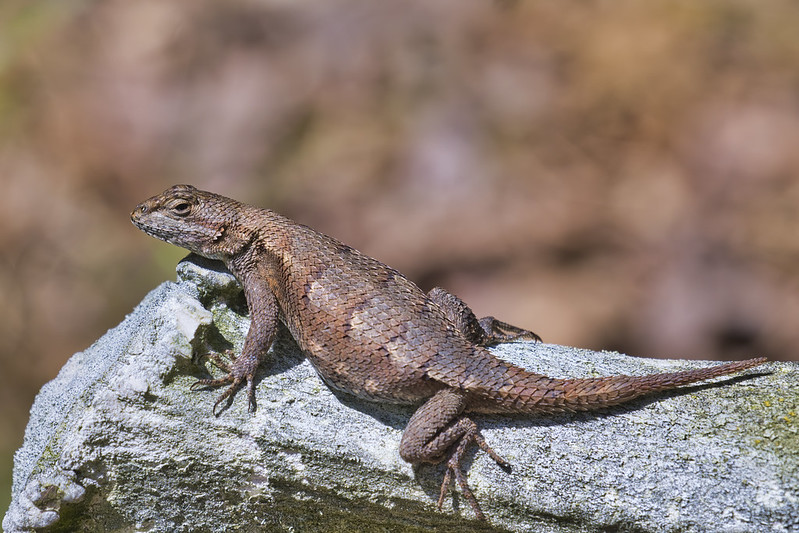Creating a wildlife-friendly yard has led to many rewarding experiences, but few have been as unexpectedly captivating as this one. Over the years, I’ve collected naturally shed antlers and arranged them throughout my property. These weathered pieces not only add rustic beauty to the landscape, but also serve an important role. Deer, rodents, and lizards all make use of them—for nutrition, shelter, or exploration.

Backyard Prairie Lizard Encounter Near Antlers
One quiet afternoon near the Ouachita National Forest in Arkansas, I was sitting on my deck when I noticed a Prairie Lizard expertly climbing one of the antlers. Its movements were purposeful and fluid. Whether it was hunting insects or seeking refuge, the lizard appeared completely at ease navigating the antler’s ridges.
I instinctively reached for my camera and began photographing handheld. To my surprise, the lizard remained still, allowing me to capture its finely scaled body, the subtle patterns along its back, and the way its claws clutched the antler’s surface.
Wildlife Photography: Observing a Prairie Lizard on Antler
Wildlife photography often requires long hours of waiting, but sometimes the best moments arrive unannounced. The soft natural light and the lizard’s calm demeanor made it possible to highlight the details of its textured skin and the organic design of the antler. It felt like a scene composed by nature itself.
Moments like these are why I keep my camera nearby. Each small interaction with wildlife offers a deeper look into the rhythms of the natural world—and reinforces the importance of nurturing spaces where these encounters can happen.
Camera Settings for Photographing Reptiles in Natural Habitat
- Location: Near the Ouachita National Forest, Arkansas
- Date Taken: May 5, 2020
- Aperture: f/7.1
- Shutter Speed: 1/1250 sec
- ISO: 400
- Exposure Bias: +0.67 EV
- Exposure Mode: Aperture Priority
- Focal Length: 400 mm
- Lens: Canon EF 100-400mm f/4.5-5.6 L IS II USM (via Fringer EF-FX Pro adapter)
- Camera Body: Fujifilm X-T3
